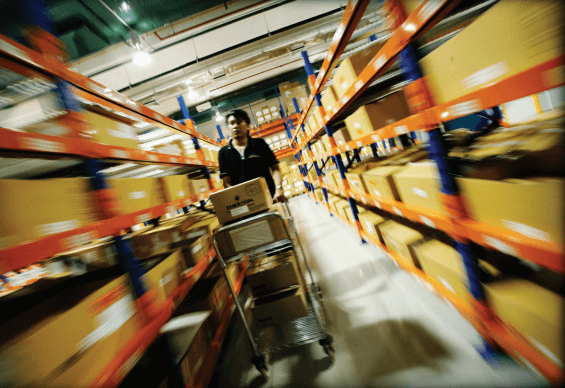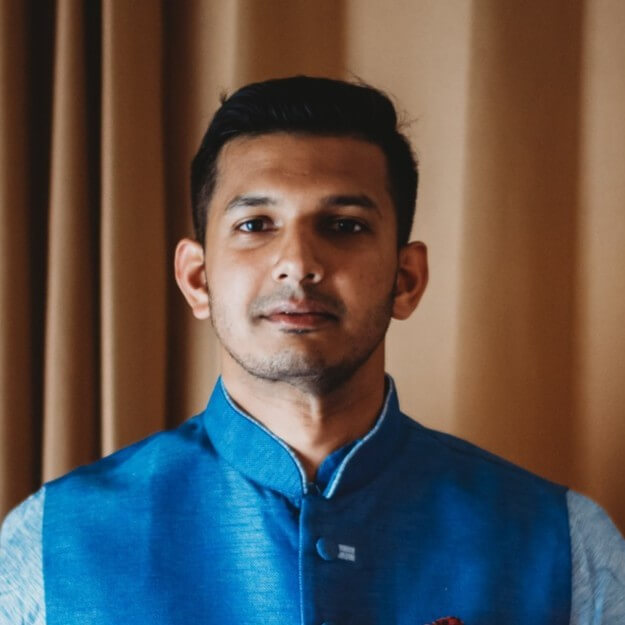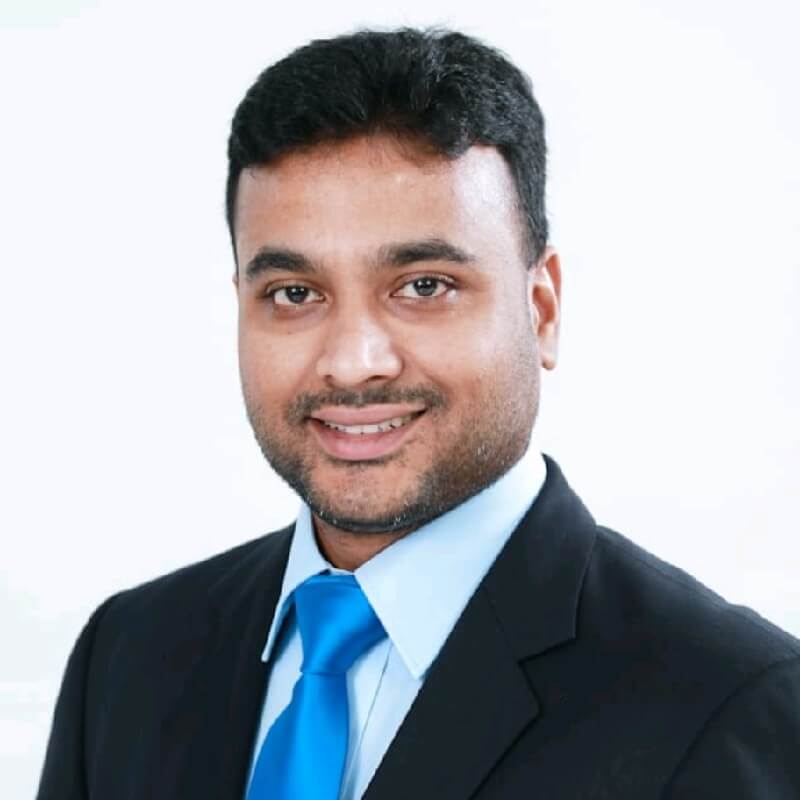 In today’s complex business environment, the industrial plant owners face tremendous pressure to stay competitive. In this environment, the plant owners try to strike a proper balance between risk and reward. For a process plant, the main risks are compromised safety and/or plant downtime. Despite the high risk, not all process plant owners depend solely on OEM parts for their engineered valves.
In today’s complex business environment, the industrial plant owners face tremendous pressure to stay competitive. In this environment, the plant owners try to strike a proper balance between risk and reward. For a process plant, the main risks are compromised safety and/or plant downtime. Despite the high risk, not all process plant owners depend solely on OEM parts for their engineered valves.
Use of non-OEM parts is one of the common sourcing practices that poses the highest safety and/or downtime risk in a process plant.
In this very first episode of the EVALUE8 Podcast Series, we interview Karthik Dayalan, an expert and the Parts Business Development Manager in Emerson. Having met several customers, we discuss and explain the risk of using non-OEM parts and the benefits of using OEM Parts to operate your plant safely.
We hope you uncover the long-term profits of using OEM parts through the information that Karthik shares with us!
Visit the Spare Parts section on Emerson.com to find out on ways to minimize your plant downtime and increase your plant safety and efficiency through Quality, Reliable and Trusted Parts.
Transcript
Pritish: Hi, everybody. I’m Pritish Char and welcome to our very first episode of “EVALUE8.” For all our listeners out there, “EVALUE8” is our podcast series that aims to uncover our growing industry trends and how Emerson plays a vital role in its future. Today I’m joined by Karthik Dayalan, a subject matter expert at Emerson to discuss and get an insight on a very interesting topic, which is non-OEM parts. Karthik, welcome to the show.
Karthik: Thank you, Pritish, for having me here today.
Pritish: It’s a pleasure to have you here, Karthik. Now, before we dive a little deeper into the topic today, I’d love for you to share some of your educational background and your career path to where you are today, managing the parts business for Fisher products here at Emerson.
Karthik: I started my career with Emerson 16 years ago as a fresh engineering graduate, exciting times back in 2005. My first job was an application engineer, preparing bids for large KOB1 projects, which gave me an opportunity to learn a lot about Fisher products, sizing of control valves, actuators, instrumentation, configuration, and pretty much the entire project lifecycle.
I then had the opportunity to move to U.S. and help the team to build and deploy Fisher quote to order process enterprise tools, a prestigious project for Fisher, and it demanded to work with North American impact partners to understand their business model and how they support their customers. Life moved on in Emerson with extended roles on the business tools and process side, and I spent a couple of years in the U.K. and Europe before I joined Emerson Middle East and Africa in Dubai.
Next seven years in Middle East and Africa, I was part of project management team, played key roles in managing Sadara mega project in the Saudi Arabia, and then moved on to take sales, operations, planning, and Perfect Execution leader role for Middle East and Africa.
This role gave me a lot of insights into enterprise metrics, strategic planning, financials, operational expert excellence, and most important is understanding what customer expect from Emerson. I then moved to Emerson Asia Pacific in 2019 as business development leader for parts, and I think that’s what brings me to this podcast today.
Pritish: Well, that’s a nice varied background, Karthik, and it seems like your international exposure has added to your depth of knowledge. Now, with that in mind, we’d like to know from your perspective on what constitutes as an OEM part?
Karthik: Three words, I would say quality, reliability, and trust. I repeat again, what makes an OEM part, it’s quality, reliability, and trust we promise our customers.
Pritish: Karthik, I think that was well said. You put forth three very strong pillars. On that note, what is the true value of an OEM part?
Karthik: The products we design to solve customer problems, which enables them to run their process reliably and safely are made up of several individual parts integrated together as a final assembly. Every part is designed to meet customer’s specification and perform under severe pressure-temperature cycles, day in and day out. The true value we commit is the same performance throughout the lifecycle of the plant. And we have been doing this consistently for over 140 years now.
Pritish: That’s a long time to be consistent, Karthik. That’s amazing. Now I want to talk about quality. How do we identify ourselves to provide quality parts?
Karthik: I think this is a great question, Pritish. Let me talk about Fisher part number here. The 11-digit part numbers, not only contain the dimensional requirements of a part, we have embedded the material grades with secondary manufacturing processes, special requirements that customer process demands from quality and testing requirements to surface finish tolerances, hardness, and assembly instructions.
We call it the DNA of a part which only Emerson can understand. We maintain this data forever throughout the lifecycle of the part and we can go back to the original project specifications when the valve was shipped. Adding on to this, we also add strong supplier management process to ensure our OEM requirements are met every single time we make a part.
Pritish: Karthik, that’s a very well thought out process. So how does a customer plan what parts to be purchased? As you and I know control valves are complex engineered products.
Karthik: There are different scenarios, Pritish, where a customer purchase a part. And let’s focus on the most important segment, which is the STO event, the shutdown, turnaround, and outage event. It’s a very complex and race against time event, which every customer by all industry segments face a lot of challenges.
In Emerson, we engage with the customers 12 to 18 months in advance. Our site walk-down process is seamless, and we use digital tools and apps to walk down the customer asset and record their problem statements. We have subject matter experts in Emerson who then diagnose the data and suggest the right parts required.
Data-driven decisions strongly back our rich experience. The most important strength of Emerson is the unique valve serial number, which holds all the data of the valve as shipped and as serviced throughout the lifecycle of the plant. Our parts data is a global design that ensures we never duplicate part numbers. To summarize, we exactly know what type, size, material, etc., etc., we have out there. And what parts my customer need even without looking at the valve. Our data is our strength with which we support our customers.
Pritish: Absolutely, Karthik. I have to agree with you. We live in a data-driven society where we make data-driven decisions so thank you for that. We spoke about OEM parts, its quality and how it adds value to the customers. Can you maybe explain the associated risk when a customer decides to go with a non-OEM part for their valve in a plant?
Karthik: It’s very simple. They are compromising their plant performance, safety, and quality. The non-OEM parts will eventually fail 10 out of 10, even if they get lucky and they will only marginally increase the failure timeline there. Also by using non-OEM parts, they derail their maintenance strategy, inviting a lot of risk because the non-OEM vendors will not be a long-term trusted partner.
Take pandemic for example, we have seen many strong third-party service companies, which had either closed down or consolidated operations because of various reasons. Emerson will weather all the challenges and stay with the customer always.
Pritish: Karthik, you know, you’re right. The pandemic was an extreme challenge by itself. So how does Emerson add value when a customer approaches us to support their process with OEM parts?
Karthik: We have a strong part support ecosystem in Emerson. Every valve we ship have a unique serial number, as I told before, that help us to understand the valve even after several years. The oldest serial number I have seen I think is from the year 1932. Not only that, our inventory strategies are well supported by third-party logistics experts like Neovia and our promise is we promise availability of parts 75 percentage of the time at the order entry stage. When we receive the order, we can fulfill 75 percentage of the order quickly.
In Asia Pacific, our demonstrated on time service level is 95% to the customer. Ninety-five percentage of the time we have delivered on time as per customer expectation. Eventually our ultimate aim is zero late and we are pretty close to this goal. Even during the pandemic, we had our supply chain running around the clock to support our customers.
Pritish: Oh wow. I look forward for us to achieve that, Karthik. Now, could you walk us through any interesting facts or success stories where the customer opted for non-OEM parts and later turned to OEM realizing its value?
Karthik: Indeed, a very interesting and satisfying story. An oil and gas giant in Asia was facing choking issues on a valve. This valve is a workhorse and in operation for about 13 years. To fix this choking issue, customer decided to trust a non-OEM vendor, maybe its service partner, and replaced the metal parts of the valve. To their surprise the choking issues are faced again in no time, and the non-OEM vendor has no clue and gave up.
Customer then approached Emerson and our experts investigated the issue and found that the crude property has changed. Increased particle sizes in the crude is clogging the valve internals and choking the valve. We addressed the customer problem with a new cage design. We retrofitted on the same valve to avoid additional costs of valve replacements to the customer. At the end, we have a very happy customer there.
Pritish: Thank you for sharing that success story, Karthik. I’m glad to hear that our customers are happy with that change. Now in your view, what can replicators truly accomplish and shine some light on what they cannot do?
Karthik: They do a bad job trying to copy us and they cannot deliver the quality that Emerson offers. What replicators are trying to do is match only the physical attributes of a part and they don’t get it right most of the time leading to more damages to the valve when these parts are installed.
Let me share an interesting fact here. The O-rings we install on our actuators, have a special solid lubricant dispersed throughout their cross-section. As these O-rings wear and tear, new lubricant is exposed, which maintains the static and dynamic friction for consistent and smooth operation of the valve. Only Emerson can understand the DNA of the part. Replicators can copy the physical attributes only.
Pritish: And that’s what makes Emerson unique. So Karthik in your view, does a gray market exist?
Karthik: I think it’s an interesting question, Pritish. No, it does not exist. We are in this business for over 140 years now and our regional impact partners and sales channels are like one company. Our business rules are such that we cannot cross-sell into others’ territories and we don’t cross-sell into others’ territories. Every business transactions are made understanding their customer base and their locations.
Traders cannot buy or sell OEM parts into the gray market. There’s also another challenging area that our customers believe certain non-OEM traders have access to OEM parts, which is not. We have proved to many customers that their source of non-OEM parts are not buying from Emerson. Though some of the non-OEM vendors submit a lot of documents to support their claim, we can make that claim.
Pritish: That’s very interesting, Karthik. So then, is price the only factor customers would choose a non-OEM part and what are the challenges to educate these customers?
Karthik: Easy answer, it’s a big no. Price is not the primary factor. Many customers have openly shared that they use non-OEM parts to meet their lead time since the STO events was not planned early, or they do not have the parts or the right inventory strategy to support critical valves’ downtime. Over the time they adopt a reacting strategy and use resources available quickly to them. We always stress the importance of early planning and engagement with our customers.
Pritish: Karthik, I think that’s really important as well. And I think throughout this conversation, you’ve really guided us on, you know, the benefits of OEM parts and non-OEM parts. But from an Emerson standpoint, you know, what has Emerson been doing on non-OEM parts awareness?
Karthik: We have a dedicated business unit for parts now, and we are focusing on connecting to customers through webinars, educational videos, brochures, remote learning with customers, STO teams and maintenance teams that we are doing with specific customers. We understand the demand, do it specifically for them.
We now have the biggest focus on this space to protect customers from counterfeit parts, more important from that gray area when most customers are not even aware that they are buying non-OEM parts. I’m sure this podcast will also add to the list now.
Pritish: That’s wonderful, Karthik, and I’m also hoping that this podcast will raise this awareness.
Now for all our listeners out there, are you someone who wants to learn more about OEM parts? Join us for our virtual Asia Pacific Emerson exchange to find out more on the subject. Now I would encourage you to keep a lookout for our promotional activities that will be happening on our website as well as on our social media pages, LinkedIn, Facebook, and Twitter. And with that, I just want to thank, Karthik, for your insightful knowledge, and it was an absolute pleasure to have you on the episode today. Thank you, Karthik.
Karthik: Thank you, Pritish. My pleasure talking to you as well.
-End of transcript-

